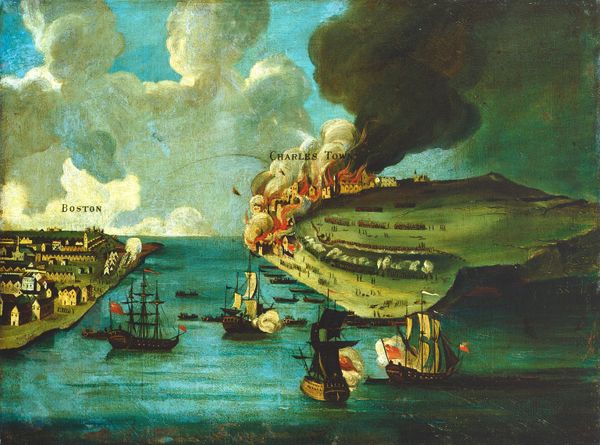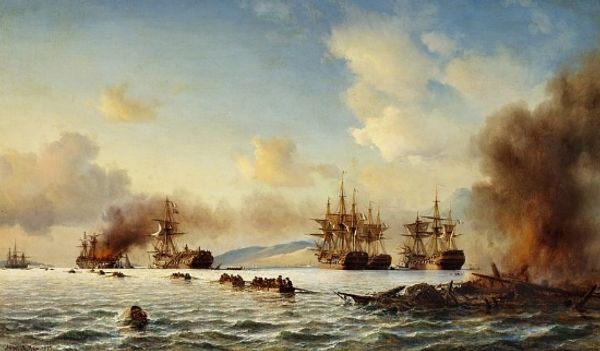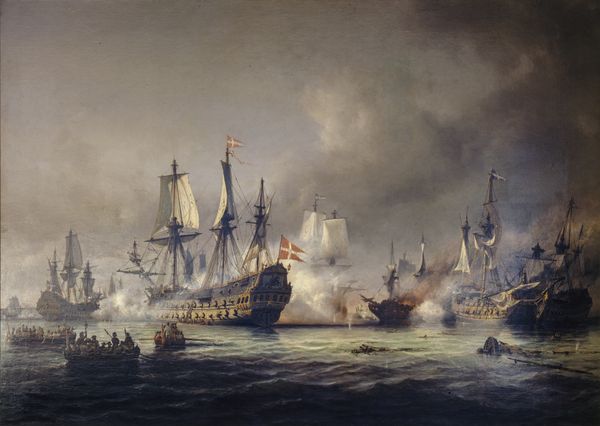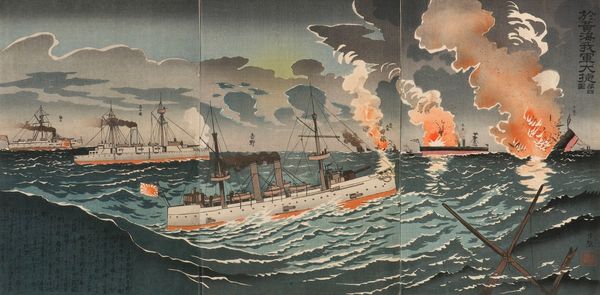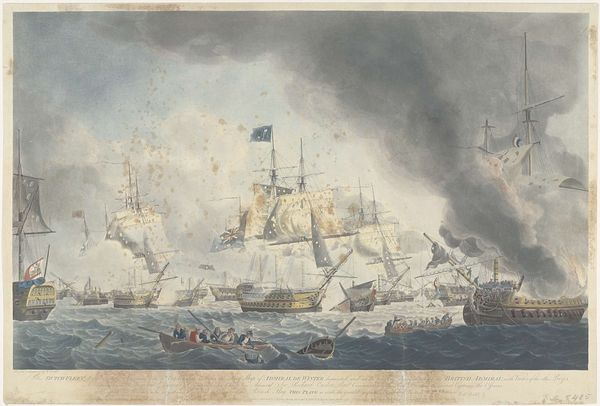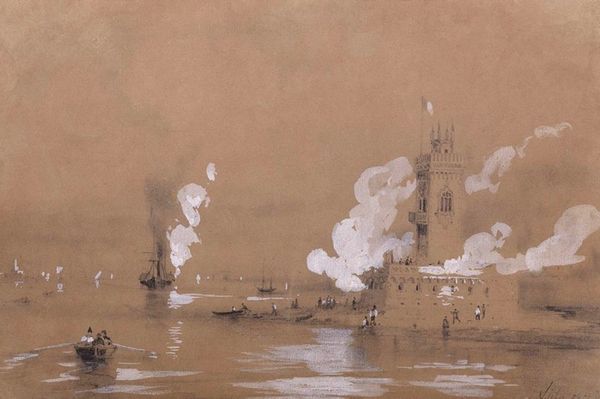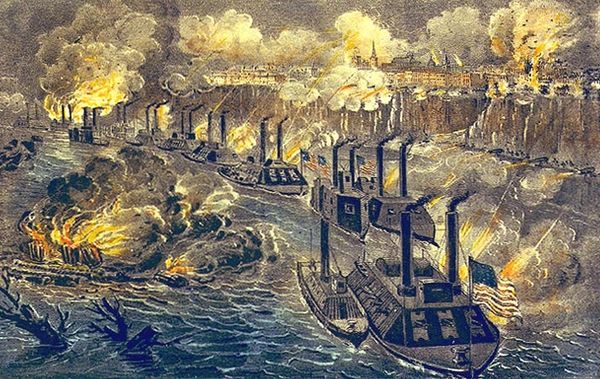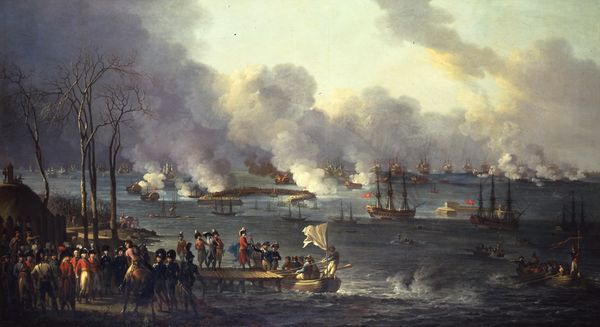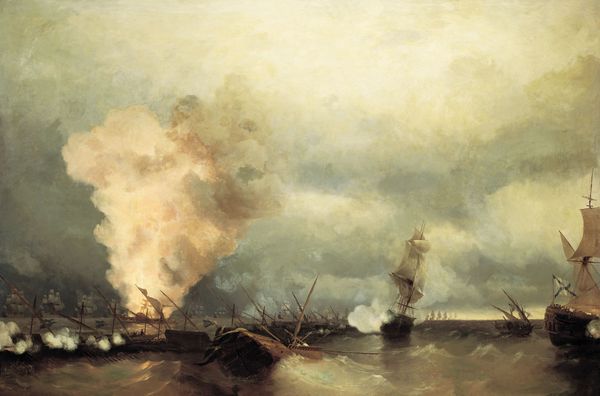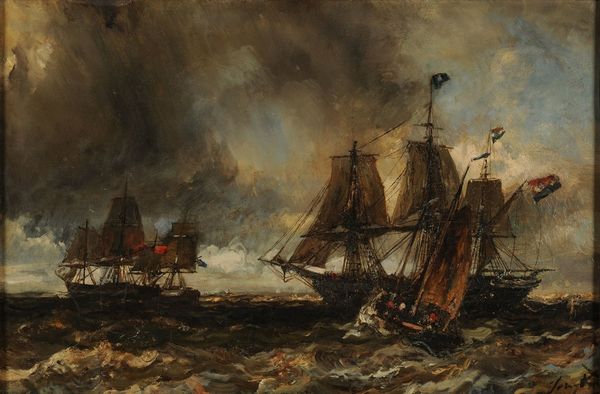
Copyright: Richard Eurich,Fair Use
Editor: This oil painting, “Withdrawal from Dunkirk, June 1940,” by Richard Eurich, really captures the chaos of the event. The vastness of the scene and the dramatic plumes of smoke are overwhelming. What do you see in this piece, particularly regarding its lasting impact as a visual representation? Curator: I see the weight of collective memory etched into this seascape. Eurich, in his dramatic realism, isn’t just showing us boats and smoke; he’s tapping into a deep well of cultural trauma and resilience. Consider the smoke, its swirling darkness acts as a visual metaphor for the uncertainty and fear of the time. Editor: That makes sense. The plumes definitely give it a feeling of oppressive doom. Curator: Indeed, but look closer. Amidst the chaos, there are small vessels filled with people, symbols of hope and the collective will to survive. Think of the 'little ships,' civilian boats answering the call to aid in the evacuation. Their presence transforms this image into a testament to unity in the face of overwhelming odds. The symbolism works on many levels. Editor: So, it's not just about the devastation, but also the defiant spirit? Curator: Precisely. The artist uses the visual language of war to also highlight humanity's response, the symbolic weight is immense. What stays with us, generation after generation? This is more than a history painting; it is an embodiment of memory itself. Editor: It’s fascinating to consider how visual symbols like smoke and boats can hold such potent and lasting meanings. I appreciate your perspective! Curator: And I yours, highlighting the very personal connection each viewer brings. A painting like this evolves in meaning with time and dialogue.
Comments
No comments
Be the first to comment and join the conversation on the ultimate creative platform.
